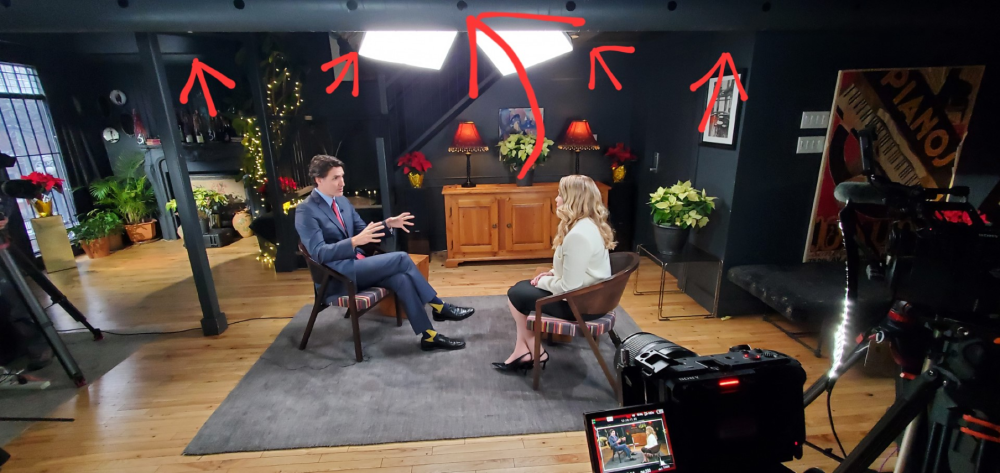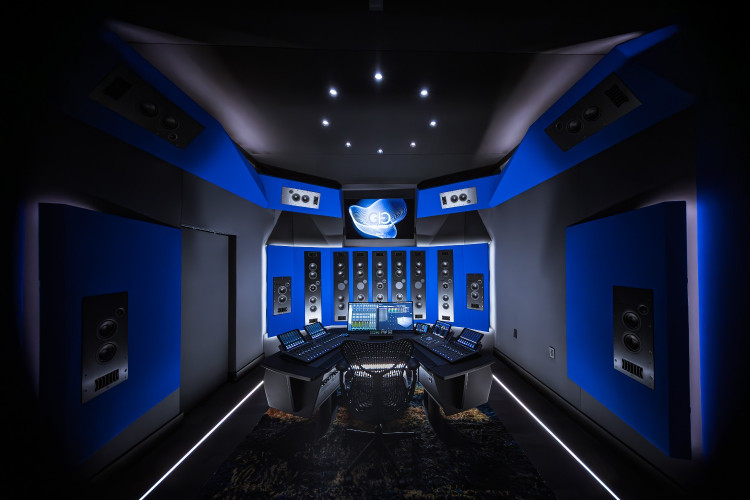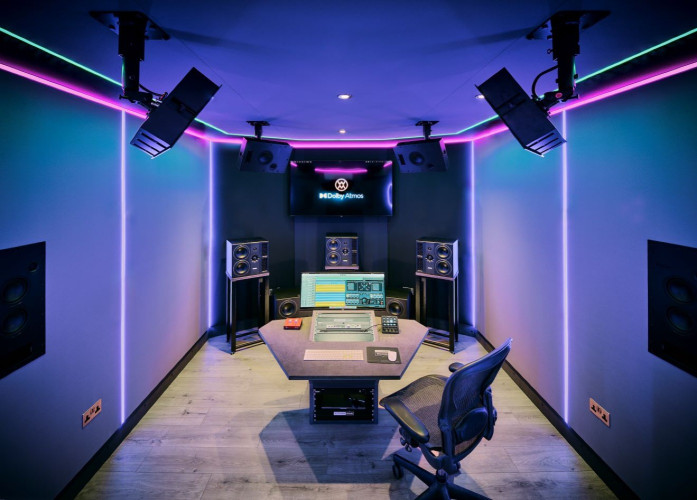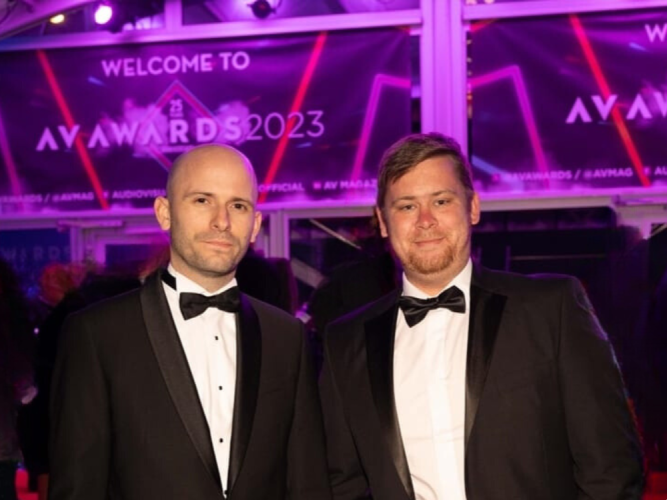TV-BAY: Ask the Experts

Author: Bob Pank#
Published 1st October 2012
Studio Technologies responds to typical booth visitor questions at NAB and IBC
By: Gordon Kapes, president, Studio Technologies
Studio Technologies, the manufacturer of tailored, high-performance video, audio and fiber optic products for the professional audio and broadcast markets, has been building equipment to address the production needs of broadcast professionals for over 30 years. The following is a compilation of questions posed by visitors to the Studio Technologies booth at major trade shows.
Q: This is my first experience with Studio Technologies. What is this company all about?
A: Studio Technologies, Inc. was founded in the late 1970’s to build audio products for recording studio applications. These products had to have the star audio quality necessary to be accepted by users that had big demands for great sound. We carry that tradition on today through our product lines that deal with audio. During the 1980’s products were added for the broadcast market with the focus staying on audio. As the years moved on, the broadcast market was where we chose to expend most of our energy. We really liked developing the unique equipment required to meet these application challenges. With our high-quality audio background, we refused to believe that users had to accept the mediocre audio quality that was typically provided. We developed equipment that followed our philosophy with excellent results. Whether a signal is intended for on-air use or just crew inter-communications, good audio quality is imperative in achieving optimal results. In the past few years we’ve added video and fiber-optic products to our product line, but the core belief that doing it “right” remains for everything we produce.
Q: We’ve heard about your Model 400 SDI-over-Fiber transport units – what makes these products unique?
A: It’s pretty common these days to transport broadcast-standard SDI (digital video) signals over single-mode fiber optical cable. For single-channel or low-cost applications there are many small electrical-to-optical and optical-to-electrical converters available from a variety of manufacturers. Some are especially rugged, some are built for price-sensitive applications and, for the most part, they’ll do a decent job when conditions are not demanding, but they are quite limited in capability. And in the field, while the tiny converters offered by some companies may be sexy and perform well, they can often disappear during show tear downs! Card- and rack-based products are also available that are especially suited for infrastructure applications. While not optimized for mobile or field broadcast use, they can offer lots of options, including remote management, flexible optical multiplexing and redundant powering. The Model 400’s niche is to meet the needs of broadcasters and video production applications that have a unique range of requirements: rugged and reliable, simple to deploy, flexible to use, offer moderate multiplexing and are operationally simple to understand but with feature depth.
Q: How do these units work in the field?
A: The Model 400 uses the standard form-factor of a single rack space (1RU), ensuring that finding a portable or fixed mounting location won’t be an issue and the lightweight aluminum enclosure makes each unit easy to transport. Model 400 units can be ordered with a range of SDI channel counts and optical input and optical output resources. At the factory the units are configured with the appropriate circuit boards and passive optical components. Once a unit arrives for an application, it’s a simple matter of applying power, making the required SDI connections using standard BNC connectors and connecting into the designated optical fibers. The Model 400 will begin its core function of SDI transport over fiber without any required configuration settings, reading of the graphical display or connecting an Ethernet cable for remote access. But as other more intensive application requirements arise, the Model 400 can meet the challenge. The range of parameters that can be monitored (locally using the front-panel display, via web pages or even SNMP) is extensive. Many operating modes can be adjusted, including manual and automatic control of the optical output signals. Providing the unit’s required power is both simple and elegant. A source of AC mains, 100-240 volts 50/60Hz, can be directly connected. Alternately, a source of 10-18 volts DC power, typically from a battery, can be used. If both are connected a full-redundant power scheme is implemented.
Q: How many SDI signals do you transport over each fiber?
In the early days of using fiber optic cables in broadcast applications the number of strands available was always a concern. And while this can be still an issue, it’s getting more typical to have 4, 12, or even more strands available when interconnecting locations. The Model 400 picks a middle ground, optically multiplexing three SD/HD/3G-SDI signals onto each interconnecting fiber. This makes efficient use of the fiber resources while not forcing users to place “all their production eggs in one basket.” This philosophy applies to aspects of reliability and deployment flexibility.
Q: Are Model 400 units field re-configurable?
Well, not really. The goal was to have units that would reliably and consistently perform their intended task. Allowing users or technicians to make major changes in the field, while useful at times, just leads to issues for the next event. It’s very simple for the capabilities of card-based systems to morph from production show site to show site and never reflect the desired configuration after its first trip out! So maybe what makes Model 400 units unique is that they are not! They combine a wide-range of standard, but important features that users will understand, while not being forced to “dig into” the product just to move signals via fiber. Again, as the needs of an application get more complex the Model 400 will support that complexity, allowing experienced users to take advantage of what’s available to get their jobs done. From 1RU mounting, to industry-standard connectors, to practical power-up defaults, the deployment and operating agility of these units is terrific.
Q: Why does audio being embedded onto an SDI signal require that video be present?
A: Digital video data is the primary information (“payload”) that broadcast SDI signals are designed to carry. Any other signals, in the form of digital data such as multiple channels of audio, time code and closed-captioning, are carried as ancillary (“extra”) payload. As specified in the SMPTE® standards, SDI signals include many additional bits besides video data. Whether these bits are used depends on the implementation of the software that controls the SDI interface. More and more frequently, equipment and broadcast systems designers are finding this data space to be very useful as, in a sense, it offers lots of “free” transport capability. But to use the “extra” bits requires that a digital video signal to always be present. Unlike analog video, we’ve never understood the concept of a digital video “black” signal. An SDI interface either has a valid digital video signal present or it doesn’t. It could be video data representing the color black, blue or purple, or it could be a 1920 by 1080 picture of your dog catching a ball in the park. Any one of them is equally worthy at keeping the SDI signal “alive” and available for embedding extra signals, including audio.
With this information in mind, it’s important to carefully review any SDI-based equipment you are considering using for transporting audio or other auxiliary signals. Many of these devices require an external source of SDI to operate. They are not capable of internally creating a digital video signal like our new Model 5150, 5152 and 5162 modules. So the low-cost embedder you are considering using might work great when you have an SDI input present. But don’t expect the audio to continue to be embedded when that input goes away. The SDI output will go away too! Generating internal SDI signals within accessory products is certainly possible, but takes some expensive parts and considerable engineering expertise. Equipment that does this is available but is not common. So be certain to check the specifications carefully. Studio Technologies Live-Link and Live-Link Jr. remote camera interface products, for example, generate video test patterns if a source of SDI is not connected. This allows the units to continuously embed the audio channels (along with RS-422 and related data), whether or not an external SDI signal is present. This ensures that the unit’s full signal transport capability is always available.
Q: What party-line intercom systems are compatible with the Studio Technologies 2-wire to 4-wire interfaces?
A: This question comes up often but I think that what people are really asking is “are your interfaces compatible with both RTS® and Clear-Com® party-line systems?” The answer is very much yes. The audio quality will be excellent when used with user devices (typically belt packs) from both. The “TW” party-line systems from RTS have two audio channels on a 3-pin XLR cable and our interfaces will support both. A Clear-Com analog party-line system also uses a 3-pin cable but is typically a single-audio channel with a separate pin for DC power. That one audio channel will be supported by our interfaces.
The 2-wire to 4-wire interfaces from Studio Technologies also co-exists peacefully with both the RTS and Clear-Com powering schemes. Both have power on pin 2 of a 3-pin XLR connector even though they handle audio differently. All Studio Technologies interface units provide DC power on pin 2. For special applications, the Model 47 provides independent DC sources on both pins 2 and 3, but an explanation of that requires a rather lengthy discussion
Q: By the way, I’ll be in Chicago soon - where do I get the best deep-dish pizza?
A: Even I won’t risk giving an answer to that difficult question. Let’s just say there are many, many great places. Come and sample some of them yourselves!
# # #





























